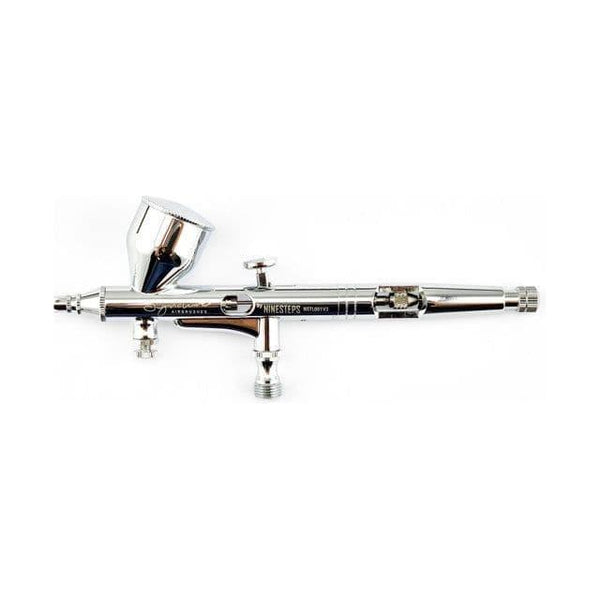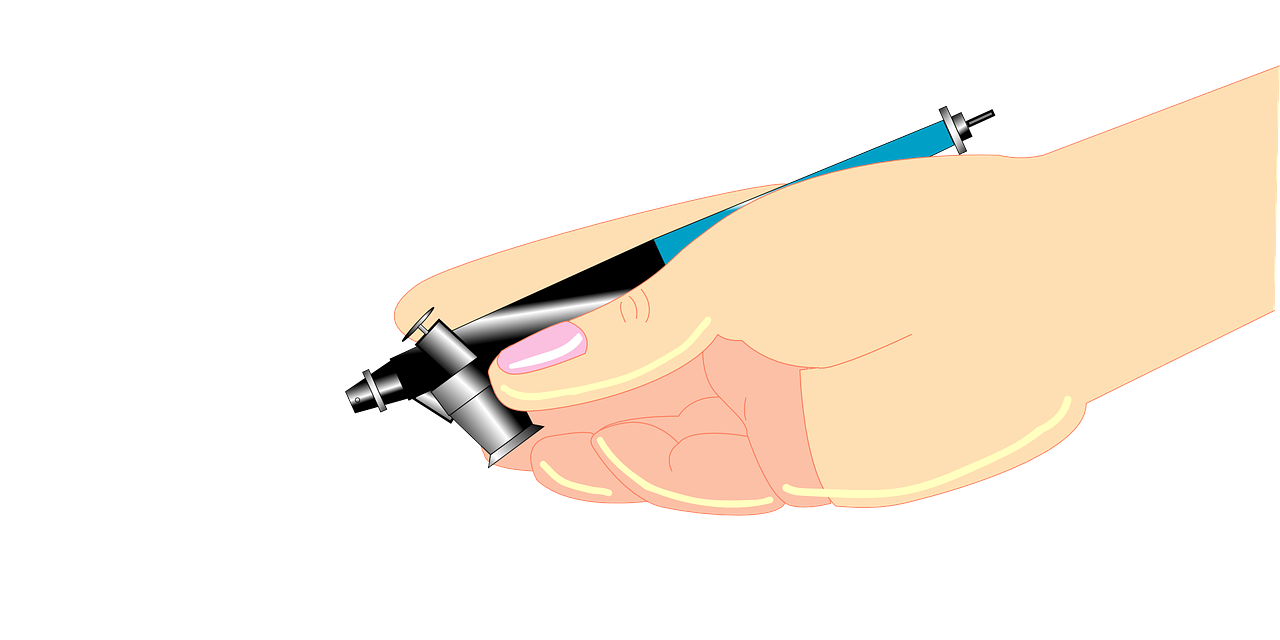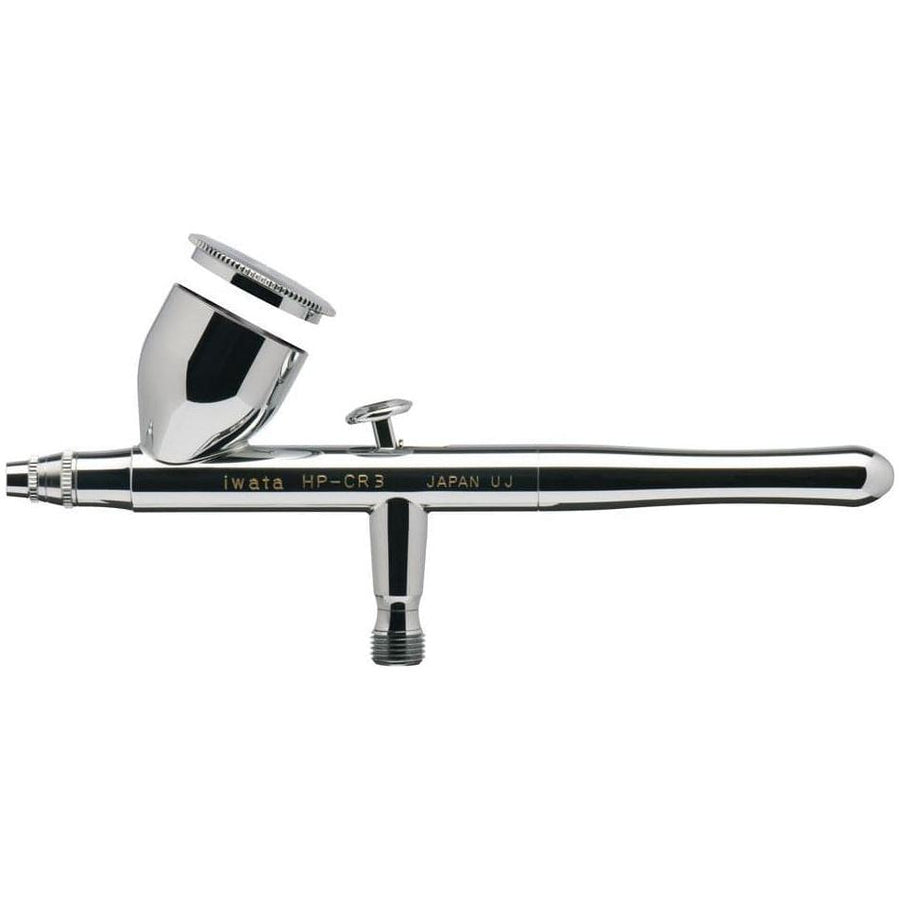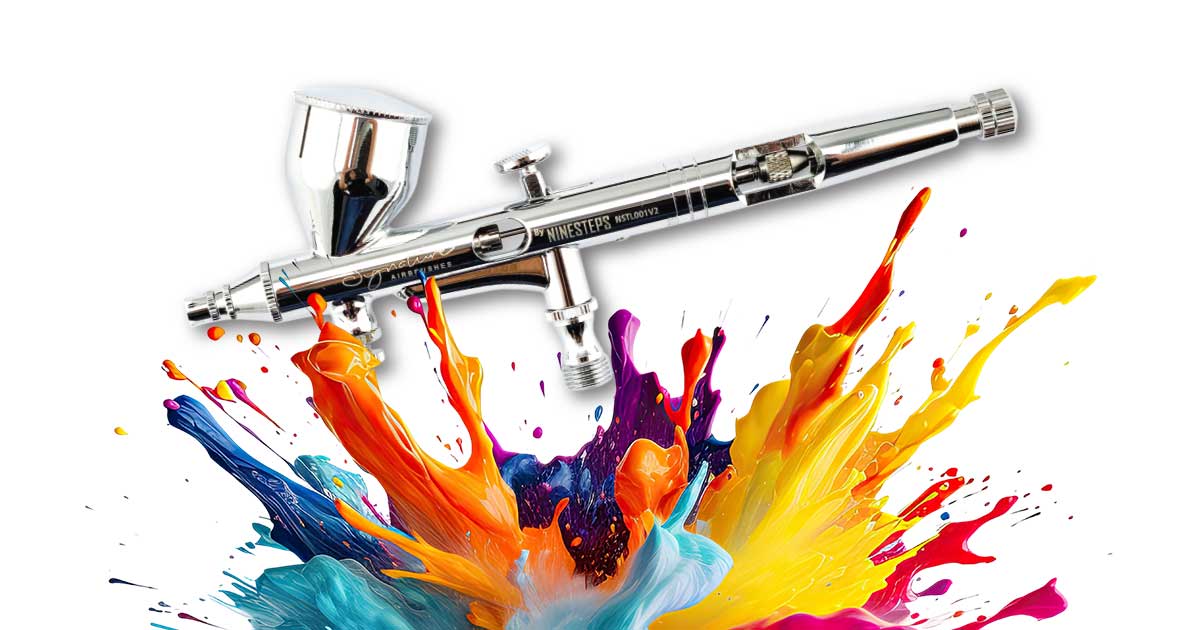Airbrush Painting Guide: A Guide to Achieving Professional Results With Your Airbrush
Master the art of model painting with expert techniques and essential tips
The art of model painting stands as a cornerstone of the hobby world, transforming simple kits into stunning masterpieces through careful attention to detail and proper technique. Whether you're a seasoned hobbyist or just beginning your journey into the world of scale models, understanding the fundamentals of painting can elevate your projects to new heights. At Hearns Hobbies, we're committed to helping enthusiasts master the essential skills needed to achieve professional-quality results in their model painting endeavours.
| Model Painting at a Glance | |
|---|---|
| Equipment Needed | Airbrush, compressor, paint booth, safety gear, quality brushes |
| Paint Types | Acrylics, enamels, lacquers, primers, clear coats |
| Skill Levels | Beginner to advanced techniques for all experience levels |
| Key Techniques | Base coating, shading, weathering, detailing, clear coating |
Choosing the Right Equipment

Essential Painting Equipment Setup

Professional Model Paint Selection
The journey to masterful model painting begins with selecting the proper tools and equipment. A well-equipped workspace is essential for achieving professional results, and investing in quality materials will significantly impact your finished pieces. At the heart of any model painting setup lies the humble airbrush, a versatile tool that can transform your modelling projects from amateur to extraordinary. Alongside this cornerstone tool, you'll need a reliable compressor to ensure consistent air pressure and smooth paint application.
| Essential Equipment | Purpose |
|---|---|
| Quality Airbrush | Precise paint application and smooth coverage for professional results |
| Reliable Compressor | Consistent air pressure delivery for optimal paint atomisation |
| Paint Booth | Proper ventilation and overspray containment |
| Safety Equipment | Respiratory protection and eye safety during painting sessions |
Understanding Paint Types
The world of model paints is vast and varied, with each type offering unique properties and applications. Acrylic paints from renowned manufacturers like Vallejo have become increasingly popular due to their versatility and ease of use. These water-based formulations provide excellent coverage while being environmentally friendly and simple to clean up. For those seeking the ultimate in durability and finish quality, lacquer paints offer unparalleled results, though they require proper ventilation and safety precautions.
Pro Tip:
Always test new paints on spare parts or testing cards to understand their flow characteristics and coverage before applying them to your valuable models.
Paint Preparation
Proper paint preparation is crucial for achieving professional results in model painting. Begin by thoroughly mixing your chosen paints using appropriate thinners to achieve the ideal consistency for airbrush application. The general rule of thumb suggests a milk-like consistency, though this may vary depending on your specific paint type and application needs. Temperature and humidity can significantly impact paint behaviour, so maintain a controlled environment when possible. For optimal results, consider using primers specifically designed for your model's material, as they create an ideal surface for paint adhesion.
Remember that patience during preparation will reward you with superior results in your finished project. Take time to understand your materials and create the perfect working environment.
Basic Airbrushing Techniques

Mastering fundamental airbrushing techniques forms the foundation of professional model painting. Understanding the proper distance between your airbrush and the model surface is crucial - typically maintaining 10-15 centimetres ensures optimal paint atomisation and coverage. Practising consistent hand movement helps achieve smooth, even coats whilst preventing the dreaded 'spider web' effect. Many beginners find success starting with simple base coating techniques before progressing to more advanced methods like pre-shading or mottling.
Pro Tip:
Start your spray pattern slightly off the model and continue past it to ensure even coverage. This technique, known as 'overspray control', helps prevent paint buildup at the beginning and end of each pass.
Advanced Painting Methods
Once you've mastered the basics, exploring advanced painting techniques can truly bring your models to life. Pre-shading involves applying dark lines along panel edges and recessed areas before the base coat, creating subtle depth and shadow effects. Post-shading, conversely, emphasises these areas after the base coat has dried. Modulation technique, particularly popular in military modelling, involves varying the tone of large surfaces to create the illusion of different light interactions. These methods require practice and patience, but the results can be truly spectacular when executed properly with quality paints.
| Technique | Application |
|---|---|
| Pre-shading | Creating depth and shadows before base coating |
| Post-shading | Enhancing panel lines and details after base coating |
| Modulation | Creating subtle tonal variations for realistic light effects |
Weathering and Effects
Weathering transforms a perfectly painted model into a realistic representation of its full-scale counterpart. Begin with subtle techniques like paint chipping using a sponge or brush with weathering products. Washes, created by thinning dark paint and allowing it to flow into recesses, enhance surface detail and create depth. For advanced effects, consider using pigments to simulate dust, rust, or mud accumulation. The key to convincing weathering lies in researching reference photos and applying effects logically - remember that less is often more when creating scale-appropriate wear and tear.
Understanding how real-world objects age and weather is crucial for creating authentic-looking models. Study reference photographs and observe patterns of wear in actual vehicles or structures.
Maintenance & Troubleshooting
Proper maintenance of your airbrush ensures consistent performance and longevity. Establish a routine cleaning schedule after each painting session, using appropriate cleaning solutions for your paint type. Pay particular attention to the needle and nozzle assembly, as dried paint in these areas commonly causes spraying issues. When troubleshooting common problems like spattering or inconsistent spray patterns, systematically check for proper paint consistency, air pressure settings, and potential blockages. Regular maintenance not only prevents frustrating painting sessions but also protects your investment in quality equipment.
Understanding these fundamental aspects of airbrush maintenance helps prevent common issues like tip dry, paint buildup, and irregular spray patterns. Keep spare parts like needles and nozzles on hand, and don't hesitate to disassemble your airbrush for thorough cleaning when necessary. Remember that prevention through proper care is always easier than dealing with problems once they occur.
Advanced Tips & Tricks
Elevating your model painting skills requires mastering sophisticated techniques that go beyond the basics. Creating subtle colour transitions through careful paint mixing and layering can dramatically enhance the realism of your models. Consider incorporating speciality paints like metallic finishes or candied colours for unique effects. Many experienced modellers find success using masks and stencils for complex camouflage patterns, whilst others excel at freehand techniques. Understanding colour theory and how different pigments interact becomes crucial at this level, particularly when working with transparent layers or creating custom paint mixes.
Pro Tip:
When creating custom paint mixes, document your ratios and keep small samples. This practice ensures consistency across large projects and helps recreate successful colour combinations for future builds.
Environmental Considerations

Creating an optimal painting environment significantly impacts your results. Proper ventilation is essential not only for safety but also for achieving the best possible finish. Consider investing in a quality spray booth to control overspray and maintain consistent air flow. Temperature and humidity play crucial roles in paint drying and curing - ideal conditions typically range between 18-24°C with relative humidity between 40-60%. Using a dehumidifier or heater when necessary can help maintain these optimal conditions throughout your painting sessions.
| Environmental Factor | Optimal Range |
|---|---|
| Temperature | 18-24°C (65-75°F) |
| Relative Humidity | 40-60% |
| Air Flow | Consistent, filtered ventilation |
Safety Practices
Maintaining proper safety protocols is paramount when working with model paints and associated chemicals. Always wear appropriate personal protective equipment, including a properly fitted respirator mask when using spray paints or airbrushes. Eye protection and nitrile gloves protect against splashes and skin contact. Ensure your workspace is well-ventilated and keep a clean, organised area to prevent accidents. Proper storage of paints and thinners in appropriate containers helps maintain their quality whilst preventing potential hazards.
Remember that safety equipment is an investment in your health and should never be compromised. Quality protective gear allows you to focus on your craft without worry.
Additional Insights
Success in model painting often comes from understanding the subtle nuances of different techniques and materials. Experimenting with various paint brands and types helps develop a personal preference and style. Consider keeping a project journal to document techniques, paint mixtures, and lessons learned from each build. Many modellers find that joining local clubs or online communities provides valuable feedback and inspiration. Regular practice with basic techniques whilst gradually incorporating new methods helps build confidence and skill level naturally.
Photography plays an increasingly important role in modern model making, both for documenting your work and sharing it with others. Understanding basic photography techniques, particularly macro photography, can help showcase your models' finest details. Consider investing in proper lighting and a simple photography setup to capture your finished works effectively. Remember that proper documentation of your projects not only helps track your progress but can also serve as valuable reference material for future builds.
Frequently Asked Questions
What's the best type of paint for beginners?
For beginners, water-based acrylic paints like those from Vallejo are ideal. They're easy to use, quick-drying, and clean up easily with water. They also provide excellent coverage and can be easily thinned for airbrush use. Plus, they're less toxic than other paint types, making them safer for newcomers to the hobby.
How do I prevent paint from clogging my airbrush?
To prevent airbrush clogging:
- Properly thin your paints to a milk-like consistency
- Clean your airbrush thoroughly after each use
- Use appropriate cleaning solutions for your paint type
- Maintain consistent air pressure while painting
- Strain your paints before use to remove any dried particles
What's the ideal air pressure for airbrushing models?
The ideal air pressure varies depending on the paint type and desired effect:
- Base coating: 15-20 PSI
- Detail work: 10-15 PSI
- Fine lines: 8-12 PSI
- Primers: 20-25 PSI
- Clear coats: 15-20 PSI
Always test your pressure settings on a scrap piece before applying paint to your model. For consistent results, invest in a quality compressor with a moisture trap.
Conclusion
Mastering model painting is a journey that combines technical skill, artistic vision, and patience. Whether you're just starting with basic techniques or advancing to complex weathering effects, the key to success lies in understanding your tools, materials, and the fundamental principles we've explored in this guide.
From selecting the right paints and equipment to mastering advanced techniques like pre-shading and weathering, each step in your modeling journey builds upon the last. Remember that proper preparation, including workspace setup and safety measures, is just as important as the painting techniques themselves.
Final Thoughts:
Don't be afraid to experiment with different techniques and materials as you develop your style. Every model presents an opportunity to learn and improve. With the right tools, proper technique, and continued practice, you'll be able to achieve professional-quality results that bring your models to life. Remember to share your work with the modeling community and never stop learning from fellow enthusiasts.
 is here! Shop now, pay later in 4 easy installments
is here! Shop now, pay later in 4 easy installments

